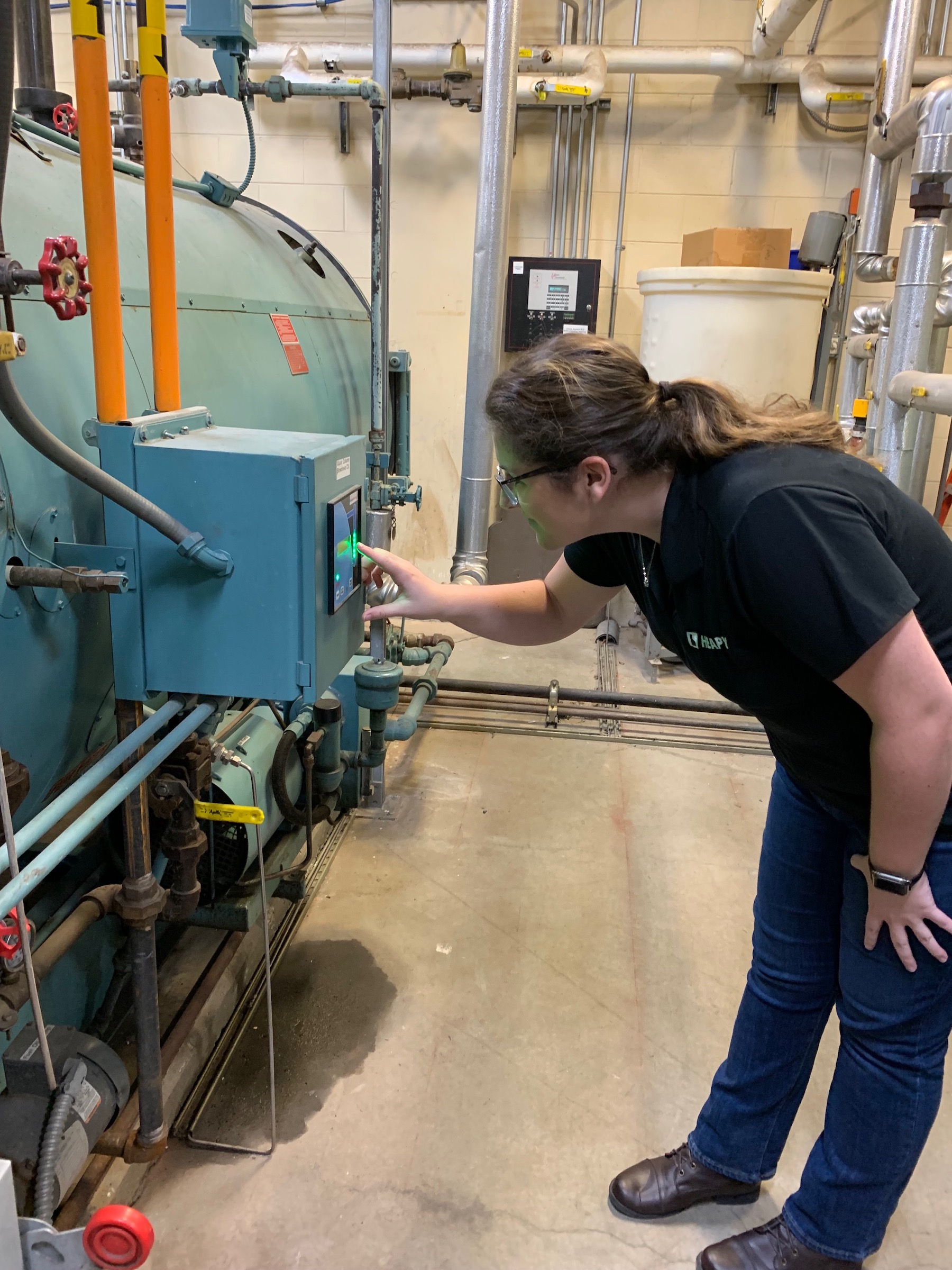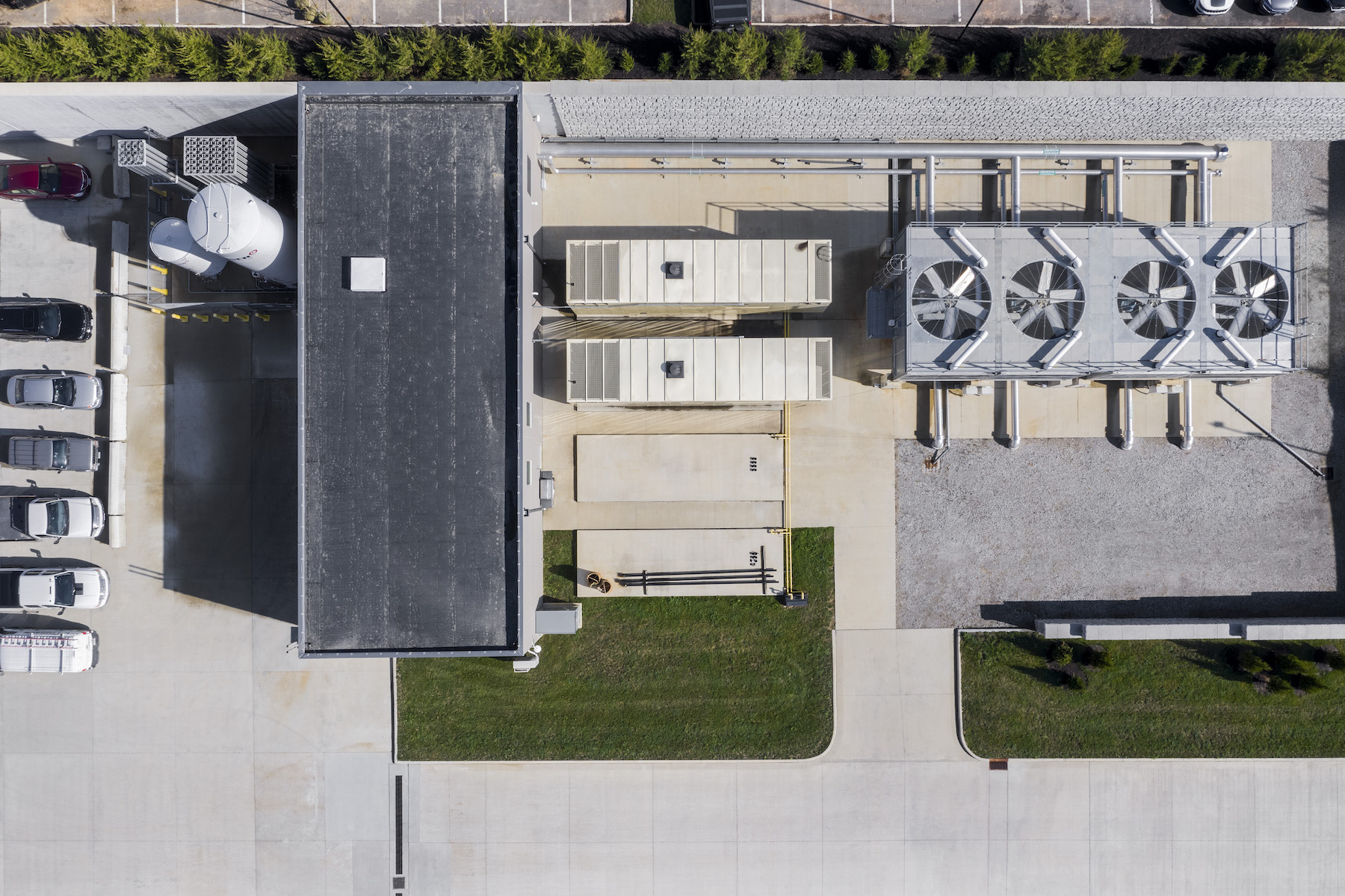When your HVAC system was new, it was designed to keep the indoor environment comfortable, functional, and safe. Over time, that system can drift out of alignment, leading to wasted resources, excessive energy consumption, and reduced occupant comfort.
Heating, ventilation, and air conditioning accounts for approximately 40% of the energy usage in an average commercial building, making it vital to conduct regular maintenance and keep these systems running efficiently.
To keep your building systems operating at peak performance, let’s examine the five most commonplace HVAC problems and potential solutions.
1. Incorrect Building Pressurization
When building pressurization is out of whack, you may notice doors slamming or hanging open, hot or cold spots, excessive humidity, or contamination of indoor spaces by outside debris such as dirt or leaves.
Most facilities need to maintain a slightly positive indoor air pressure, where more air is being taken into the building than taken out. If your building is not pressurized correctly, your HVAC system works harder to maintain heating and cooling, wasting energy and running up your utility bill.
To fix pressure issues, check for failed sensors, ensure proper sensor calibration, verify that outside air dampers and exhaust fans are not in override settings, and inspect duct work for leaks or damage.

2. Inadequate Use of Setbacks
Most facility managers are familiar with using sensors or scheduled setbacks to turn lights and equipment off when a space is not in use, but the same approach can be taken with HVAC to save you money by reducing system run time when the building is unoccupied.
When a space is unoccupied, your HVAC system should operate at reduced heating (winter) and cooling (summer) requirements. The system can then be scheduled to return to occupancy setpoints before people enter the building, ensuring the indoor environment is an appropriate temperature when occupied. These more relaxed setpoints allow for higher energy efficiency year-round.
Check your building and equipment design documents as a starting point for unoccupied versus occupied settings, then adjust through trial and error until you have the right settings.
3. Forgotten Overrides
When building occupants complain about being hot or cold, facility and maintenance staff sometimes input overrides into the HVAC system to temporarily resolve the issue. While this might fix the immediate problem, it might prevent your team from identifying and correcting the underlying issue that led to the complaint.
If these “fixes” become permanent, they can also lead to inefficiency and wasted energy. Our team worked with a middle school whose HVAC system was cooling the facility as if it was fully occupied in the middle of summer when most people were not using the space – a situation caused by overrides that were left on and forgotten. We worked closely with the school to correct the building systems so that they operated as intended, resulting in moving from an Energy Star score of 1 to 34 in just seven months.
To fix excessive overrides, reset your HVAC system to the original design settings. Regularly check the system and correct overrides to ensure the system operates as intended.
You can also work to create a culture of energy efficiency by tracking your utility bills and educating colleagues about the impact they have on energy consumption. This approach takes more effort, but will reap long-term rewards by reducing complaints and improving compliance with energy efficiency initiatives.
4. Excessive Ventilation
During the COVID-19 pandemic, many organizations increased outside air ventilation to improve air flow and exchange to reduce the spread of the virus. While increased ventilation does help with indoor air quality, many organizations overcorrected and paid the price in excessive heating and cooling costs.
Make sure to set your outside air ventilation to the standard and original design intent, which is already calibrated to provide a safe indoor environment.
5. Failed Sensors
Temperature, humidity, and pressure sensors are vital for peak HVAC system performance, but these sensors often fail as systems and equipment age.
If you notice a sensor value that has not changed for days or weeks, the sensor is probably faulty, leading to wasted energy and reduced performance.
You can correct failed and faulty sensors by recalibrating sensors, temperature probes, and dampers.
The Final Word
We’ve offered some general problems and potential solutions, but the best way to find out specific solutions to recurring HVAC issues is to conduct a focused retro-commissioning project.
Retro-commissioning is like a tune up for your building systems, safeguarding the long-term health of your infrastructure. And retro-commissioning often has a high return on investment, with a payback period of less than two years.
Many utilities offer incentive programs for good energy management and energy reduction practices, including retro-commissioning, where they will subsidize the cost of the study or provide rebates for successfully reducing energy usage. Make sure you check with your local utility before proceeding with a retro-commissioning project so you can take advantage of these financing options.
When it comes to HVAC systems, maintenance and monitoring are the key to success. A retro-commissioning approach will get you on the right track by providing a regular inspection of your equipment, monitoring energy usage, and updating the system as needed when it reaches the end of its useful life.
Connor Donovan, Engineer at HEAPY, and Tyler Guy, formerly with the firm, now Critical Facility Engineer at Facebook, contributed to this article.
Related Stories
| Oct 12, 2010
Gartner Auditorium, Cleveland Museum of Art
27th Annual Reconstruction Awards—Silver Award. Gartner Auditorium was originally designed by Marcel Breuer and completed, in 1971, as part of his Education Wing at the Cleveland Museum of Art. Despite that lofty provenance, the Gartner was never a perfect music venue.
| Oct 12, 2010
Cell and Genome Sciences Building, Farmington, Conn.
27th Annual Reconstruction Awards—Silver Award. Administrators at the University of Connecticut Health Center in Farmington didn’t think much of the 1970s building they planned to turn into the school’s Cell and Genome Sciences Building. It’s not that the former toxicology research facility was in such terrible shape, but the 117,800-sf structure had almost no windows and its interior was dark and chopped up.
| Oct 12, 2010
Full Steam Ahead for Sustainable Power Plant
An innovative restoration turns a historic but inoperable coal-burning steam plant into a modern, energy-efficient marvel at Duke University.
| Sep 30, 2010
Luxury hotels lead industry in green accommodations
Results from the American Hotel & Lodging Association’s 2010 Lodging Survey showed that luxury and upper-upscale hotels are most likely to feature green amenities and earn green certifications. Results were tallied from 8,800 respondents, for a very respectable 18% response rate. Questions focused on 14 green-related categories, including allergy-free rooms, water-saving programs, energy management systems, recycling programs, green certification, and green renovation.
| Sep 21, 2010
New BOMA-Kingsley Report Shows Compression in Utilities and Total Operating Expenses
A new report from the Building Owners and Managers Association (BOMA) International and Kingsley Associates shows that property professionals are trimming building operating expenses to stay competitive in today’s challenging marketplace. The report, which analyzes data from BOMA International’s 2010 Experience Exchange Report® (EER), revealed a $0.09 (1.1 percent) decrease in total operating expenses for U.S. private-sector buildings during 2009.
| Sep 16, 2010
Green recreation/wellness center targets physical, environmental health
The 151,000-sf recreation and wellness center at California State University’s Sacramento campus, called the WELL (for “wellness, education, leisure, lifestyle”), has a fitness center, café, indoor track, gymnasium, racquetball courts, educational and counseling space, the largest rock climbing wall in the CSU system.
| Sep 13, 2010
World's busiest land port also to be its greenest
A larger, more efficient, and supergreen border crossing facility is planned for the San Ysidro (Calif.) Port of Entry to better handle the more than 100,000 people who cross the U.S.-Mexico border there each day.
| Sep 13, 2010
Triple-LEED for Engineering Firm's HQ
With more than 250 LEED projects in the works, Enermodal Engineering is Canada's most prolific green building consulting firm. In 2007, with the firm outgrowing its home office in Kitchener, Ont., the decision was made go all out with a new green building. The goal: triple Platinum for New Construction, Commercial Interiors, and Existing Buildings: O&M.
| Aug 11, 2010
New air-conditioning design standard allows for increased air speed to cool building interiors
Building occupants, who may soon feel cooler from increased air movement, can thank a committee of building science specialists. The committee in charge of ANSI/ASHRAE Standard 55 - Thermal Environmental Conditions for Human Occupancy—after months of study and discussion--has voted recently to allow increased air speed as an option for cooling building interiors. In lay terms, increased air speed is the equivalent of turning up the fan.













